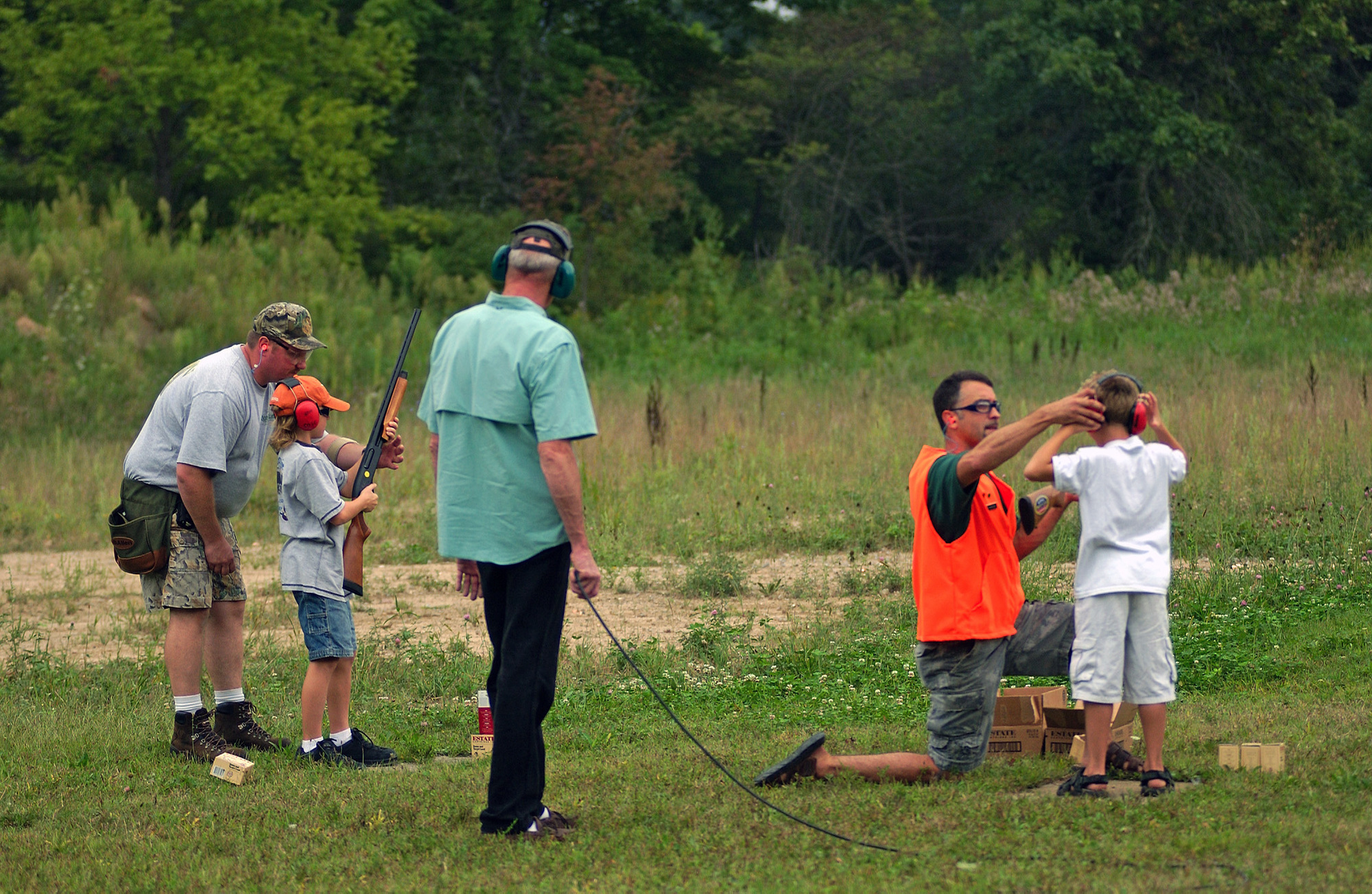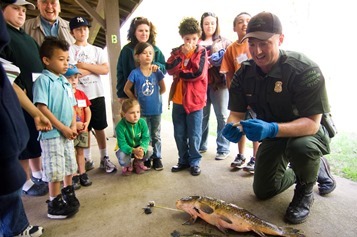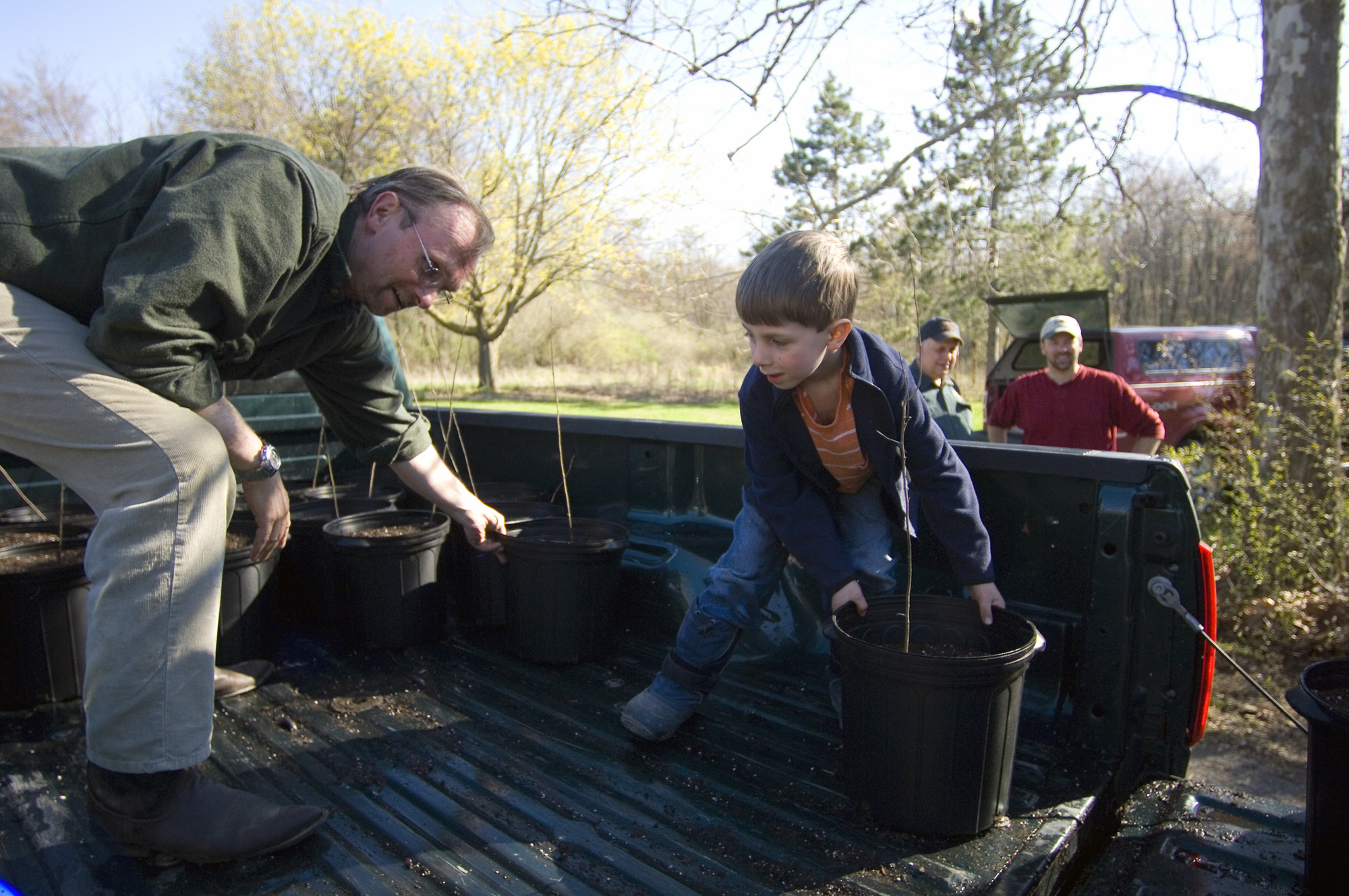Volunteers make a world of difference to state's woods, water and wildlife
To accomplish its mission, the Michigan Department of Natural Resources has been aided greatly by enlisting the invaluable help of volunteers. The state’s holdings are too vast and the task is too big for the agency to handle all on its own.
That DNR mission is the commitment to the conservation, protection, management, use and enjoyment of the state’s natural and cultural resources for current and future generations.
 For many years, the DNR has welcomed volunteers to improve wildlife and fisheries habitat or to monitor rare or unusual species. The DNR Parks and Recreation Division, for instance, has a well-organized system for recruiting volunteers who want to help protect ecosystems at many of Michigan’s state parks. For many years, the DNR has welcomed volunteers to improve wildlife and fisheries habitat or to monitor rare or unusual species. The DNR Parks and Recreation Division, for instance, has a well-organized system for recruiting volunteers who want to help protect ecosystems at many of Michigan’s state parks.
Laurel Malvitz-Draper coordinates the Volunteer Steward program for parks in southeast Michigan. She’s chosen nine parks in seven counties for removal of invasive plant species, one of her main efforts.
“We prioritized those parks, choosing those with quality ecosystems we’re trying to protect,” she said. “We want to keep the places that are in good shape in good shape.”
To that end, Malvitz-Draper schedules more than 100 workdays a year, usually two every weekend, when volunteers help remove invasive plants.
Invasive plants are those species that are not native to Michigan and whose introduction causes harm or would be likely to cause harm to the state’s economy, human health or environment.
Volunteers work year-round. Some invasive species are more readily identified and removed during particular seasons. The workers do everything from hand-pulling garlic mustard to cutting down invasive trees.
“We attract more than 1,000 individuals annually, everyone from one-time volunteers with a school group or a Scout group, to people who come out monthly to work at a park,” she said. “A lot of our workdays focus on invasive plant removal, but the approach is at an ecosystem level – we’re doing native seed collecting and native planting and monitoring for birds, rare insects, too.”
Malvitz-Draper says she trains individuals to serve as stewards who can lead workday crews without DNR
supervision. She has 15 to 20 trained stewards and is constantly adding to the roll.
“The folks on the ground know the ins and outs of those parks better than I do in some cases,” she said. “Who better to learn from?” better to learn from?”
The DNR Parks and Recreation Division maintains a calendar on the DNR website listing volunteer opportunities at numerous parks across the state.
Parks and Recreation isn’t the only DNR division that benefits from the help of volunteers.
The DNR Wildlife Division depends heavily on volunteers to create habitat at many state game and wildlife areas. But instead of asking for volunteers directly, the Wildlife Division enlists the help of partner organizations to recruit them.
Groups such as Pheasants Forever, The National Wild Turkey Federation and the Ruffed Grouse Society often team up with DNR staffers to plant mast-bearing shrubs and trees or improve grasslands.
DNR Wildlife Division Chief Russ Mason has special praise for Michigan United Conservation Clubs’ “On the Ground” program, which brings in volunteers for brush-pile building, hinge-cutting, invasive plant removal and other habitat efforts.
“We have volunteerism going on at the local level, yet the MUCC 'On the Ground' program is where our efforts are concentrated,” Mason said.
This year, MUCC has 13 projects under way around the state.
Sarah Topp, wildlife volunteer coordinator with MUCC, said the group uses social media, its website and its member clubs to attract volunteers. Sometimes, when its efforts are highlighted by media, she gets inquiries about volunteering from non-members, who are always welcome.
“You don’t have to be a member or affiliated with MUCC in any way at all,” Topp said. “You can just come out and volunteer.”
Last year more than 400 individuals volunteered for “On the Ground” workdays and this year, participation is running at that same level, Topp said.
 Volunteers help the DNR Fisheries Division on habitat improvement projects, too, such as creating woody cover in streams or lakes. But fisheries staff prefers to work with volunteers on a local level. Volunteers help the DNR Fisheries Division on habitat improvement projects, too, such as creating woody cover in streams or lakes. But fisheries staff prefers to work with volunteers on a local level.
“When people call us to volunteer, we typically try to find out what they’re interested in doing and where they’re interested in doing it and then we put them in touch with the local biologist or fisheries technician supervisor who might have an appropriate project going,” said Tami Pattison, an administrative manager with the Fisheries Division. “We have them discuss it with the local manager.”
Pattison said the DNR gets a lot of requests to volunteer from students.
“We ask what they’re interested in; if they want to volunteer at a fish hatchery, then we put them in contact with the hatchery,” she said.
The Fisheries Division often works with local clubs on these projects and most clubs welcome non-members to their workdays.
Ada Takacs, who is the volunteer coordinator for DNR’s Forest Resources Division, says more than 1,500 groups or individuals have helped cleanup trash on public land in Michigan, especially at illegal dump sites.
“In 2015 we had more than 800 volunteers who reported 4,000 hours of time and they removed 407 truckloads of trash,” she said. “Some groups adopt forests that they go back to year after year, but some prefer to go out once and after it’s cleaned up, hopefully, it stays cleaned up.”
Takacs said volunteers clean up illegal dump sites on both federal and state forests. The DNR can help with disposal fees or by providing dumpsters to dump sites.
Connect to those volunteer opportunities by visiting Clean Forests.
“We’re developing a mobile app so people can report illegal dumps remotely from any smart device,” she said. “It’ll be out in the fall. That ought to improve our program immensely.”
Volunteers are integral to the DNR Law Enforcement Division’s educational program as well.
“Absolutely,” said Lt. Tom Wanless. “They’re the heart of our program. We have more than 3,000 volunteer hunter education instructors alone. If they did not teach it, who would? Our officers (would) and that would pull them out of enforcement.”
Volunteers also teach safety programs for snowmobiles, off-road vehicles and marine safety.
“A lot of our marine safety instructors are sheriff’s deputies, but they still volunteer,” Wanless said. “And we have some that aren’t officers – they just teach.”
Wanless said teacher certifications expired this summer. When the Law Enforcement Division started contacting instructors to recertify, they had 5,600 names in their database.
Time commitments for volunteers vary. For Parks and Recreation stewardship events, it can be as little as one morning.
“Typically our workdays are about three hours,” Malvitz-Draper said. “It’s usually the perfect amount of time. Some of the work, like invasive shrub cutting, can be pretty energy demanding. After a workday like that, I don’t feel guilty sitting on the couch for the evening.”
Sometimes volunteering is a daylong affair.
MUCC’s “On the Ground” events often include a lunch break – some volunteers show up just to do the cooking – so the event can span the morning and afternoon.
So who are the volunteers?
Some are folks who have particular skills, such as licensed herbicide applicators or safety instructors. Others show up just to provide labor, digging up invasive plants or planting desirable species of trees and shrubs.
“I get a lot of feedback from volunteers,” Malvitz-Draper said. “Many of them might have wanted a career in natural resources at the DNR, but they went in another direction. This is a great opportunity to get involved in something that they always wanted to be a part of, something that seemed out of reach. There’s something for everyone depending on their interests and abilities.”
Get more information about these and other volunteer opportunities at the DNR.
Catch upcoming stories by subscribing to free, weekly “Showcasing the DNR” articles. Check out previous Showcasing articles.
/Note to editors: Contact: Debbie Whipple, 517-284-5815. Accompanying photos are available below for download and media use. Suggested captions follow. Credit: Michigan Department of Natural Resources.
Invasive (DSK532-186) -1: Volunteer Martha Gruelle helps out with invasive species plant removal at Belle Isle State Park.
Invasive-2 (DSK191-30): Volunteers engaged with Michigan Department of Natural Resources staff in invasive plant removal at the Bald Mountain Recreation Area, near Lake Orion, Michigan.
Habitat (DSK15-020): In a turkey habitat improvement project aided by volunteers from the Wild Turkey Federation, crabapple trees are repotted at Rose Lake for replanting the following year.
Safety (DSK199-24): Hunter safety instruction by volunteers at Chief Okemos Sportsman's Club in Dimondale, Michigan.
Youth Fishing (DSK374-026): Eager learners gather around a Michigan conservation officer helping out at a Michigan Steelheaders Association-sponsored youth fishing clinic on Lake Lansing.
Instruction (DSK408-003): A young hunter gets shooting instruction during Pheasants Forever's "ringnecks" program./
The Michigan Department of Natural Resources is committed to the conservation, protection, management, use and enjoyment of the state’s natural and cultural resources for current and future generations. For more information, go to www.michigan.gov/dnr.
|

 For many years, the DNR has welcomed volunteers to improve wildlife and fisheries habitat or to monitor rare or unusual species. The DNR Parks and Recreation Division, for instance, has a well-organized system for recruiting volunteers who want to help protect ecosystems at many of Michigan’s state parks.
For many years, the DNR has welcomed volunteers to improve wildlife and fisheries habitat or to monitor rare or unusual species. The DNR Parks and Recreation Division, for instance, has a well-organized system for recruiting volunteers who want to help protect ecosystems at many of Michigan’s state parks. better to learn from?”
better to learn from?” Volunteers help the DNR Fisheries Division on habitat improvement projects, too, such as creating woody cover in streams or lakes. But fisheries staff prefers to work with volunteers on a local level.
Volunteers help the DNR Fisheries Division on habitat improvement projects, too, such as creating woody cover in streams or lakes. But fisheries staff prefers to work with volunteers on a local level.





